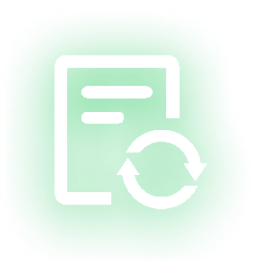All-in-one Website Monitoring Solution
-

- Uptime Monitoring
- Continuously monitor website uptime.
-

- SSL Monitoring
- Ensure SSL certificate validity to prevent browser security warnings.
-

- Domain Monitoring
- Mitigate business continuity and security risks related to domain expiration.
-

- DNS Monitoring
- Retrieve domain resolution status from major DNS providers.
-

- Defacement Monitoring
- The first line of defense against website defacement and unauthorized content changes.
-

- Keyword Monitoring
- Periodically monitor website content for specified keywords.
-

- Data Leak Check
- Protect against leaks of Pll, Cloud Keys, and other sensitive data.
-

- External Link Check
- Monitor changes in external link count and uptime.
-

- Reputation Check
- Assess risk and reputation of referenced IPs and domains.
-

- Malicious Code Check
- Continuously detect malicious code injections.
-

- HTTP Header Check
- Check HTTP security header configuration.
-

- Website Technology Check
- Analyze website technology stack.
Knowledge Hub > DevOp
Explore educational articles to deepen your understanding in technical domains.
-
TCP/IP and UDP Compared: When to Use Which?
Network protocols form the backbone of today’s interconnected digital landscape, enabling communication across the globe. Two fundamental protocols lie at the heart of the seamless transmission of data across networks: Transmission Control Protocol/Internet Protocol (TCP/IP) and User Datagram Protocol (UDP). While often mentioned together as core components of internet communication, they represent fundamentally different approaches to managing data delivery.
-
Common HTTP Request Methods: From Basics to Practice
Description In web development and API interactions, HTTP request methods serve as the core mechanisms for client-server communication. The HTTP/1.1 protocol defines eight fundamental request methods, each representing distinct operations on resources. This article will systematically explain these eight HTTP methods and their application scenarios, aiming to help developers design more standardized APIs while providing technical references for users of website online monitoring products. Analysis of HTTP Request Methods 1. GET – Data Retrieval Purpose: Request specified resources Characteristics: • Parameters transmitted via URL (visible in browser history) • Native cache support mechanism • Idempotent and safe, ideal for data query scenarios Example: GET /products/123 HTTP/1.1Host: api.example.com Security Monitoring Focus: Prevent sensitive data exposure in URLs Best Practices: • Adhere to 2048-character length limit • Use POST for sensitive parameters 2. POST – Data Submission Purpose: Create new resources or trigger processing operations Characteristics: • Parameters placed in the request body (supports complex data structures) • Non-idempotent; repeated submissions may yield different outcomes • Default encoding type: application/x-www-form-urlencoded Example: POST /users HTTP/1.1Content-Type: application/json{“name”:”John”,”email”:”john@example.com”} Typical Scenarios: • Form submissions • File uploads • Triggering batch processing tasks Monitoring Applications: Frequently used in API call monitoring to detect abnormal submission behaviors like duplicate submissions. 3. PUT – Resource Replacement Purpose: Full update of existing resources Characteristics: • Idempotent operation (identical outcomes with multiple executions) • Requires complete resource path specification • Automatically overwrites target resources Example: PUT /api/users/123 HTTP/1.1Content-Type: application/json{ “name”: “Alice Smith”, “email”: “john@example.com” } 4. DELETE – Resource Deletion Purpose: Request server to remove specified resources Key Considerations: • Actual deletion depends on server implementation • Idempotent nature ensures safety of repeated requests • Recommended to use with permission verification Monitoring Scenarios: Log audit trails of deletion operations Best Practices: Use with authentication mechanisms Example: DELETE /api/users/123 HTTP/1.1Host: example.com 5. HEAD – Metadata…


